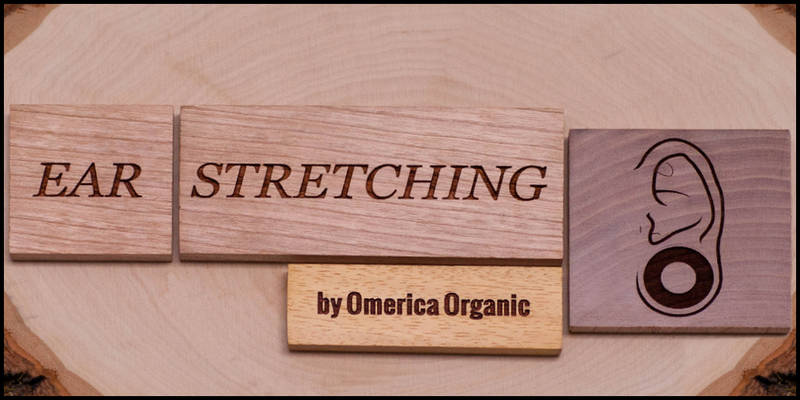
Ear stretching, also known as ear gauging, is a popular form of body modification that involves gradually increasing the size of ear piercings. When stretching your ears, it's crucial to use safe materials to minimize the risk of irritation, infection, and other complications.
Safe Materials for Ear Stretching & Gauging
These materials are all non-porous and can be sterilized in an autoclave.
Glass
Borosilicate glass is considered one of the safest materials for ear stretching. It's non-porous, easy to clean, and resistant to high temperatures, making it ideal for fresh stretches and sensitive skin. Glass plugs are smooth, reducing the risk of irritation during the stretching process.
Titanium
Titanium is a hypoallergenic material that's safe for most people, even those with metal sensitivities. It's lightweight, durable, and resistant to corrosion, making it an excellent choice for ear stretching.
Surgical Stainless Steel
Steel is another excellent option for ear stretching, particularly for those just starting their journey. It's smooth, non-porous, and easy to clean, making it a safe choice for fresh stretches. However, some individuals may have metal sensitivities, so it's essential to be aware of any adverse reactions.
Post Stretching: Materials for Healed Ear Lobes
Once your ear lobes have fully healed, you can explore a wider range of materials:
Wood
Wood plugs are lightweight and comfortable. The colors and patterns found in this material are expansive. Wood can also be etched, inlayed, concave, hollowed out for tunnels etc offering many options for unique designs. Wood should only be worn in fully healed stretches, due to the material’s porosity and incompatibility with sterilization processes and chemicals. Wood gauges require some maintenance and shouldn't be exposed to water.
Stone
Stone plugs can be worn in healed stretches and offer a natural, aesthetic appeal. There are a wide variety of stone types that can be used, offering great variety in color and pattern. Stone plugs are not suitable for fresh stretches due to their porous nature and some find the weight of stone uncomfortable.
Silicone
Silicone is comfortable, lightweight, and flexible, making it popular for healed lobes. However, it should never be used for active stretching as it can adhere to the skin and cause damage. There are also different grades of silicone, some that are safe to wear in the body and others that are not.
Materials to Avoid
Acrylic
While some use acrylic for stretching due to its affordability, it's not recommended for fresh stretches or long-term wear. Acrylic is porous and can harbor bacteria, potentially leading to infections. It is also not intended for or compatible with wear in the body.
Stretching Tips
- Regularly massaging lobes with jojoba oil or your balm or oil of choice promotes elasticity.
- Increase sizes gradually, typically waiting 4-6 weeks between stretches.
- When you gently pull your jewelry down, if you can see all the way through that’s a great indication that your ears may be ready to stretch to the next size.
- Clean your non-porous jewelry and ears regularly with a gentle, unscented soap, and dry completely.
By choosing safe materials and following proper stretching techniques, you can minimize risks and enjoy a successful ear stretching journey. Always listen to your body and consult a professional piercer if you have any concerns or questions about the process.

